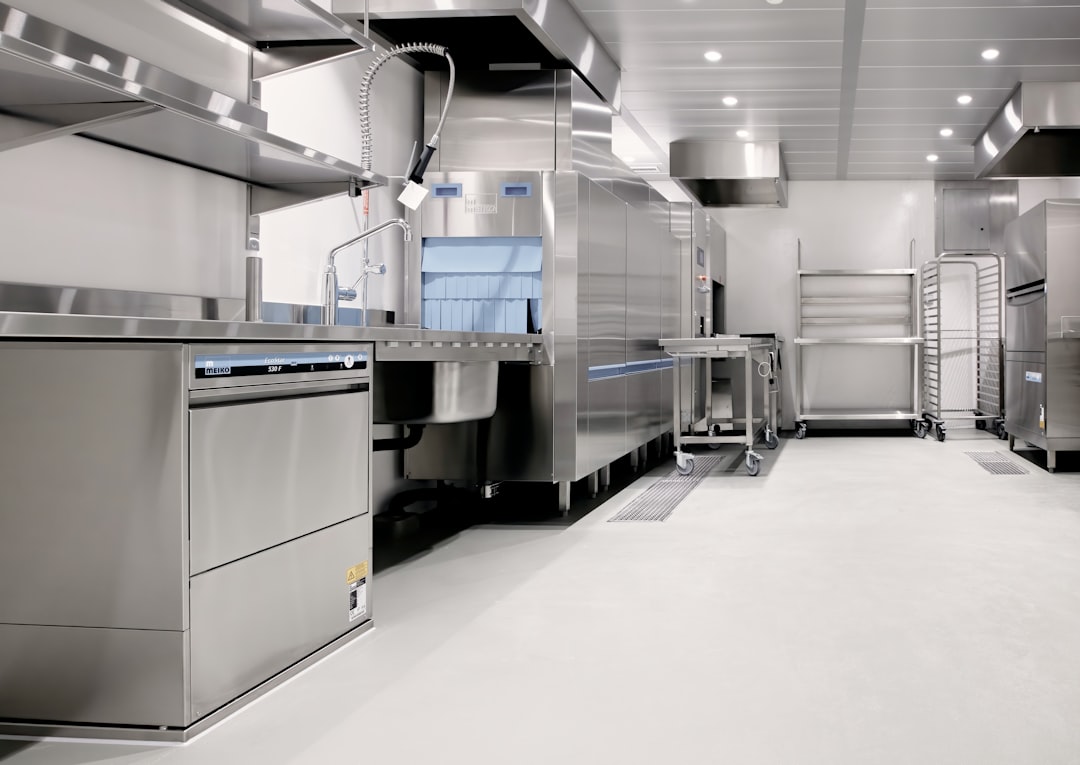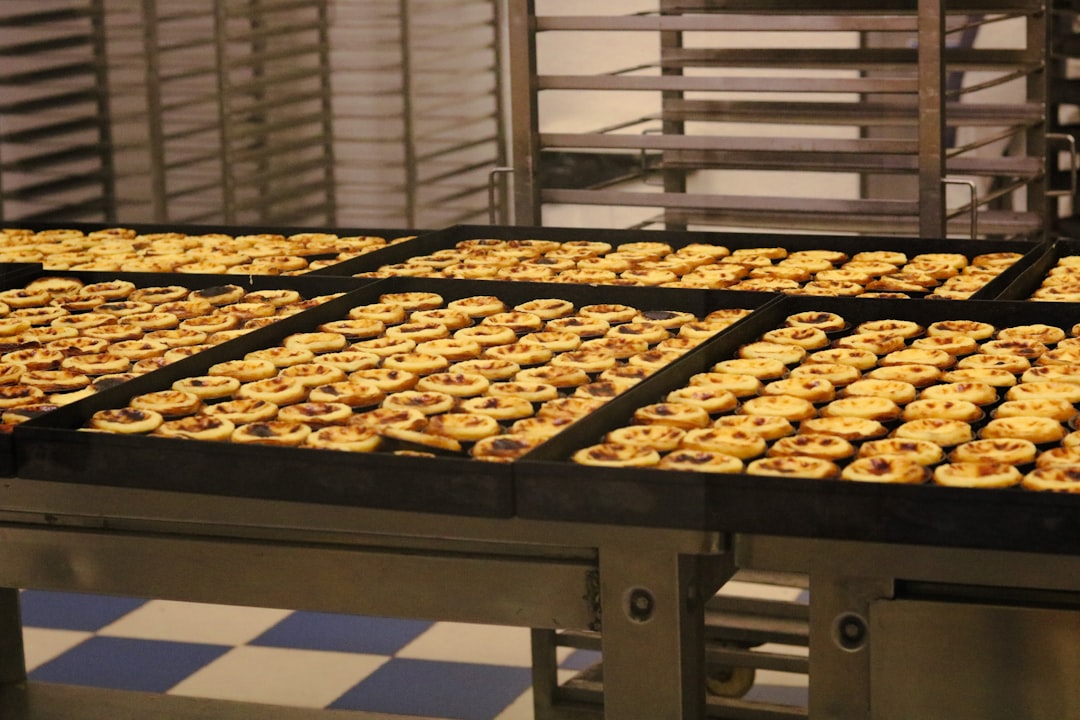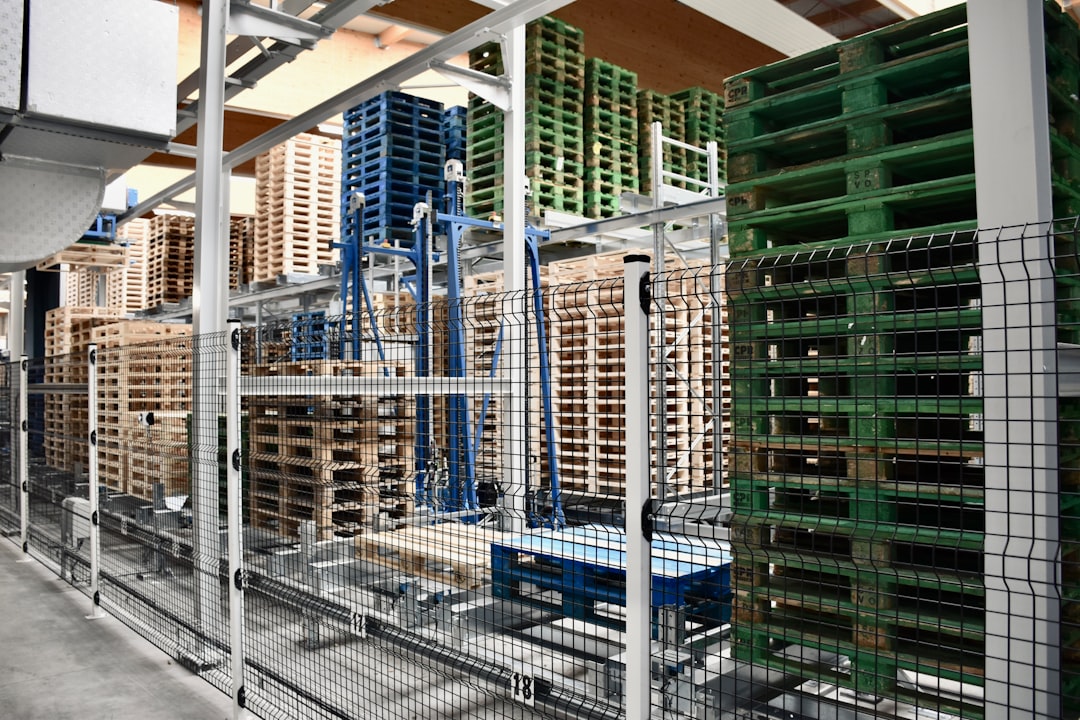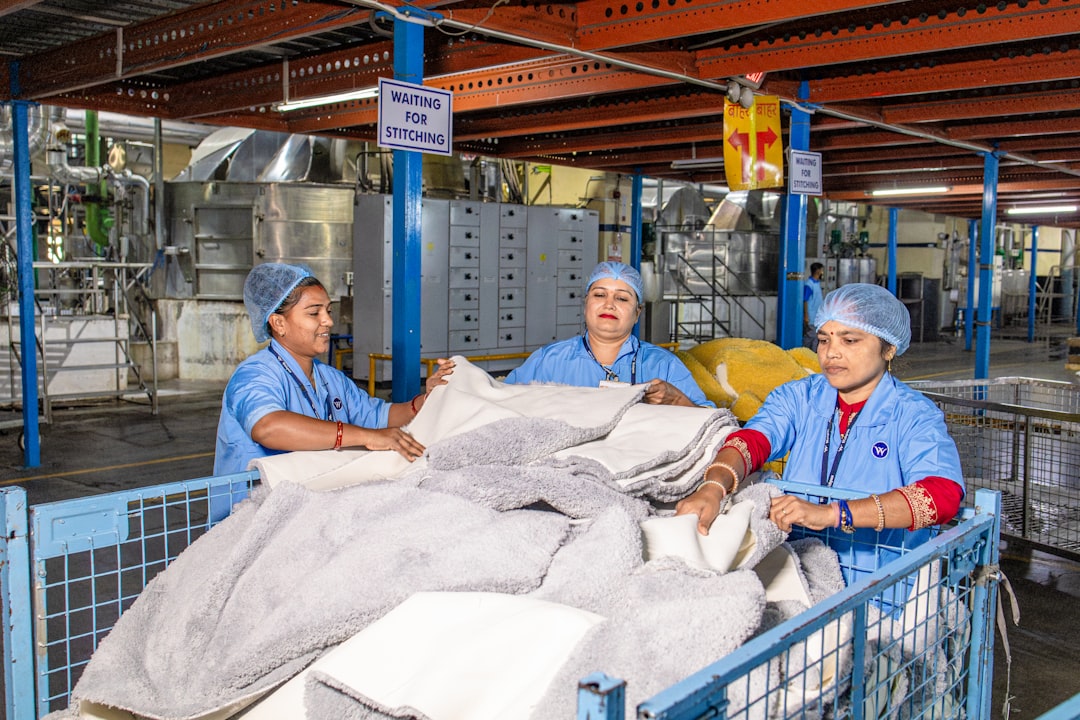

Engage prospects with a scan and streamline customer engagement with FREE QR code marketing tools by Sona – no strings attached!
Create a Free QR CodeFree consultation

No commitment

Engage prospects with a scan and streamline customer engagement with FREE QR code marketing tools by Sona – no strings attached!
Create a Free QR CodeFree consultation

No commitment
In today’s digitally driven landscape, QR codes are a strategic powerhouse for food processing equipment suppliers. Once a simple shortcut, QR codes now enable seamless connections between physical product touchpoints and critical digital content. For professionals in the food processing sector, QR codes provide instant access to product specifications, compliance certificates, video demonstrations, and ordering portals, all without complex setup or additional apps.
Food processing equipment suppliers face persistent challenges: streamlining the customer journey from printed catalogs or showroom visits to product research, boosting engagement with prospective buyers, and tracking which assets actually drive conversions. In an industry where high-value prospects often go unnoticed because offline engagement can rarely be measured, missed opportunities are common and sales teams struggle to capture timely interest. QR codes address these pain points by delivering real-time digital access at the moment a prospect needs it, on packaging, on the factory floor, or in a busy trade hall. They provide actionable data and accelerate engagement.
This guide explains how food processing equipment suppliers can use QR codes for transformative gains, including converting analog workflows to digital, creating measurable offline-to-online journeys, and enabling attribution across physical and digital channels to differentiate your brand in a competitive market. For deeper strategy, read Sona’s blog post titled The Essential Guide to Offline Attribution: Maximizing ROI through Offline Channels.

QR codes bridge the gap between physical touchpoints and critical digital resources, giving buyers, technicians, and partners instant access to the material they need, when and where they need it. The result is a faster, smarter journey, whether a plant manager needs a part number on the floor, a safety officer needs a compliance certificate during an audit, or a buyer wants to see a video of a slicer or mixer in action before requesting a quote.
Many suppliers struggle to pinpoint which brochures, signage, or assets drive top-of-funnel activity, which means high-intent prospects remain untracked. By embedding QR codes on user manuals, equipment panels, trade show displays, and packaging, food processing equipment suppliers can replace static and unmeasurable assets with responsive digital experiences that capture and qualify interest in real time.
Modern solutions such as Sona QR support this lifecycle with dynamic code generation, advanced tracking, and smooth integration into CRMs and sales systems. For example, deploying QR codes on trade show demo stations can trigger instant alerts for sales teams when decision-makers interact, enabling outreach before a competitor secures the conversation. Replace outdated workflows like paper sign-up sheets or manual business card collection with a scan-to-form journey that auto-enriches CRM records, assigns buying stage tags, and routes leads to the right rep instantly.

Food processing equipment suppliers operate in a space where purchasing decisions hinge on fast, accurate information, proof of compliance, and visible product performance. Buyers, technicians, and auditors expect instant access to specifications, certifications, training content, and parts catalogs. Without trackable connections from physical assets to digital resources, many qualified leads never leave a digital trace, making follow-up and prioritization difficult.
QR codes solve this by embedding clear, scannable actions into the environments where decisions happen: a trade show aisle, a production line, or a maintenance bay. They compress time from curiosity to clarity and give teams the analytics they need to invest wisely across channels and assets. See peer-reviewed research.
In a sector filled with complex decision cycles and rigorous audits, QR codes turn static surfaces into active touchpoints. Every scan creates data that teams can use to refine messaging, prioritize outreach, and confirm which materials contribute to pipeline and closed revenue.

Suppliers often struggle to route audiences to the right resource quickly. One plant engineer may need a wiring diagram while a procurement manager wants a pricing sheet. Standardizing QR code formats by task reduces friction and cuts down on repetitive support queries.
Lean on a small set of well-defined QR types and destinations that map cleanly to common workflows in food processing environments. This ensures every scan produces a meaningful outcome for the user and measurable value for the business.
Dynamic QR codes add more value because they can be updated post-deployment. If a regulation changes or a manual is revised, you can change the link behind the code and preserve attribution data, eliminating costly reprints while maintaining a clean analytics record.

Many growth opportunities hide in plain sight. Anywhere a buyer or technician touches a physical asset is a chance to start a digital conversation that builds trust and captures intent. The key is to align placement with context, then deliver a destination that answers the exact question likely to arise in that moment.
Map the full lifecycle from first exposure to long-term maintenance: tradeshow booth, catalog, packaging, equipment panel, and service touchpoints. Each surface can become a measurable entry point that contributes to predictable pipeline and better customer retention.
By activating these high-traffic locations, suppliers turn one-way materials into two-way channels. The resulting telemetry clarifies which placements and messages produce qualified demand, enabling smarter spending across events, print, and field service.

When maintenance depends on printed guides, audits hinge on emailed PDFs, or trade show leads rely on business cards, avoidable friction creeps in. QR codes offer a structured way to streamline these moments, improving both the customer experience and the supplier’s ability to follow up with precision.
Focus on use cases that directly address bottlenecks in your pre-sale and post-sale workflows. The following examples are common in food processing settings and deliver measurable outcomes.
These use cases demonstrate how simple scans can reduce friction across the buyer’s journey. They are also easy to measure, which provides the data needed to justify expansion into other placements and product lines.
Every scan is an intent signal that reveals who is engaging, where they are engaging, and what they want to accomplish. By using distinct QR codes for each surface and journey stage, you can segment automatically and retarget with precision across email, paid media, and sales outreach.
Food processing equipment suppliers serve a variety of stakeholders: plant engineers, maintenance managers, food safety officers, purchasing teams, and distributors. Segment your QR experiences to match these personas and their intent. Then use scan data to tailor your follow-up and allocate sales resources to the highest-value opportunities. For execution, see Sona’s Playbook titled Intent-Driven Retargeting: Driving High-Impact Campaigns with First-Party Intent Signals.
With Sona QR, each code is a smart entry point that captures real behavior, not guesses. You can build retargeting lists that mirror what people actually did, which consistently improves conversion rate and sales velocity.
QR codes tie together the channels that historically operated in silos. Print, events, packaging, and field service can finally contribute to the same measurement framework as your website and ads. This creates a cohesive engagement narrative that accelerates decisions and improves forecasting.
Plan your QR deployment holistically. Select the top five channels you rely on to reach plant managers and procurement teams, then decide what the scan should achieve on each surface. Ensure that your creative and call to action set expectations clearly so people know what value they will receive in return for scanning.
QR codes are the offline onramp to your digital marketing engine. By managing all codes and performance in a centralized platform like Sona QR, you can maintain consistent branding, monitor engagement across channels, and sync scan activity into your CRM and ad platforms to fuel personalized follow-ups.
A structured approach prevents haphazard QR deployments that fail to scale. Start with one or two high-impact use cases, define the business outcome, and set tracking up correctly so you can prove value quickly.
Use this checklist to move from concept to measurable results. Each step aligns with common workflows in food processing equipment sales and service, with an emphasis on speed to value and long-term scalability.
Target tangible outcomes. Examples include reducing missed follow-ups by enabling instant manual downloads at the machine, driving pipeline by capturing demo requests at events, or boosting service plan renewals by guiding customers from invoices to a scan-to-renew flow.
Clarify who benefits and how you will measure success. For instance, if you aim to reduce service calls related to basic maintenance, link on-equipment QR codes to clear SOP videos and track whether call volume and mean time to repair improve.
Select dynamic codes for campaigns that require agility or tracking, using dynamic QR technology. Dynamic links let you change destinations as regulations, specs, or offers evolve, while preserving data continuity. They are essential for forms, pricing sheets, and content you plan to optimize.
Use static codes only for destinations that will never change, such as a landing page with evergreen content. When in doubt, choose dynamic so you can attribute scans, retarget audiences, and keep your options open.
Use clear branding, a contrasting frame, and a benefit-driven call to action such as Scan for HACCP certificate or Scan for parts lookup. Good visual hierarchy matters in busy environments like trade halls and plant floors.
Test scannability on multiple devices and at realistic distances. Validate scans under factory lighting where glare and shadows are common. Check performance on curved or textured surfaces and confirm durability with lamination or metal plates where appropriate.
Prioritize placements where the audience has both motivation and time to act. Examples include trade show demo stations and banners, the first pages of your printed catalog, equipment panels and access doors, and service invoices left after a job.
Sequence your rollout. Start with one flagship product line and your next event. Once you have data on scan rates and conversions, expand to packaging, field service materials, and distributor co-marketing assets.
Instrument your links with UTM parameters and connect scans to downstream behaviors such as content views, form fills, and booked meetings. Monitor performance by placement, product, and persona to see which combinations produce revenue impact.
Use A/B tests to refine landing pages, content order, and calls to action. Replace underperforming assets quickly with updated content through your dynamic QR platform, then iterate based on lift in conversion and sales velocity.
Food processing equipment purchases typically involve long buying cycles, multiple stakeholders, and rigorous validation. Without proper analytics, it is hard to determine which print materials or events actually contribute to deals. QR code analytics fill this gap by connecting scans to actions and revenue.
Start by standardizing tracking across your deployment. Use unique dynamic codes for each asset, apply consistent UTM parameters, and integrate with your CRM so scan events append to contact records. Then build dashboards that show the full picture from scan to pipeline.
Advanced tools like Sona QR and Sona.com unify offline scans with website visits, ad clicks, and email engagement. You gain a connected view of the buyer journey, which makes it possible to justify spend on print and events with the same rigor you apply to digital channels.
Scaling QR programs requires discipline in placement, messaging, and data management. Teams often hit ceilings when they reuse one generic code across many assets or neglect to define clear calls to action tied to user intent. A small set of best practices can unlock significant gains.
Focus on the placements you already fund and the actions you need prospects and customers to take. Align value exchange at every scan: if you want a plant manager to scan a code on a panel, give them exactly what they came for, such as a troubleshooting video or a parts finder.
Creative deployments can amplify impact. Place QR codes on sanitation log binders to open a step-by-step video guide, or on spare parts bags to link to a reorder form that remembers the part number. These small touches build habits that improve customer satisfaction and create consistent, measurable engagement.
QR codes have redefined how food processing equipment suppliers engage prospects and customers across the full lifecycle. In a market shaped by long sales cycles, strict compliance, and complex buyer committees, QR-enabled workflows deliver the speed, clarity, and measurement needed to stand out. Every catalog page, equipment panel, and trade show surface can become an actionable digital touchpoint that speeds decisions and reduces friction.
By adopting QR strategies tailored to this sector, you move beyond guesswork. You create offline-to-online synergy, raise the value of every interaction, and assemble a complete picture of engagement from first scan to signed order. The payoff is significant: earlier engagement with high-value prospects, better utilization of service and training assets, and clean attribution that ties campaigns to revenue.
Getting started is straightforward. Choose one or two high-impact use cases, deploy dynamic codes with clear CTAs, and integrate scan data into your CRM. Platforms like Sona QR and Sona.com make it simple to manage codes at scale, monitor performance, and connect offline engagement to pipeline and closed-won deals. With the right approach, QR codes become more than a convenience. They become a strategic lever for growth and competitive advantage. Start creating QR codes for free.
QR codes have transformed the food processing equipment suppliers industry from static product catalogs into dynamic, measurable engagement tools. Whether it’s streamlining access to detailed machine specs, simplifying maintenance schedules, or providing instant troubleshooting resources, QR codes replace cumbersome manuals with instant, mobile-friendly actions that enhance customer experience and drive informed purchasing decisions. Imagine your clients effortlessly accessing up-to-date equipment data right at their fingertips, boosting satisfaction and accelerating sales cycles.
With Sona QR, you can create dynamic, trackable QR codes in seconds, update information across campaigns without reprinting, and link every scan directly to actionable insights and revenue growth. No more missed opportunities or outdated content—just smarter interactions that turn every scan into a valuable connection. Start for free with Sona QR today and transform how your food processing equipment engages and converts prospects into loyal customers.
Suppliers can embed QR codes on manuals, equipment panels, trade show displays, and packaging to provide instant access to digital content, track buyer interest, and accelerate purchase decisions.
Common QR code types include web links to product pages, vCards for contact sharing, forms for quotes or registrations, PDF downloads for compliance documents, and app downloads for asset management.
Dynamic QR codes allow updating the linked content without reprinting, enable tracking and attribution, and support changing regulations or offers while preserving scan data and analytics.
Effective placements include trade show booths, equipment panels, packaging and labels, printed catalogs, service vans, and invoices to capture engagement at various buyer journey stages.
QR codes capture scan data such as time, location, and device, which integrates with CRM systems to link physical asset interactions to leads, pipeline, and revenue for accurate offline-to-online attribution.
Key steps include choosing a use case, selecting dynamic QR codes, designing and testing codes with clear CTAs, deploying across high-impact channels, and tracking performance to optimize results.
By assigning unique QR codes for different buyer personas and journey stages, suppliers can segment scans to tailor follow-up emails, ads, and sales outreach for higher conversion rates.
QR codes address challenges like unmeasurable offline engagement, delayed purchase decisions, difficulty tracking buyer intent, and costly print updates by providing instant, trackable digital access.
QR codes can link to up-to-date compliance certificates, safety sheets, and SOPs directly on equipment frames or documentation binders, reducing audit failures and downtime.
QR codes unify print, events, packaging, and field service channels into a single measurable framework, enabling cohesive engagement tracking and more effective marketing investments.
Use Sona QR's trackable codes to improve customer acquisition and engagement today.
Create Your FREE Trackable QR Code in SecondsJoin results-focused teams combining Sona Platform automation with advanced Google Ads strategies to scale lead generation

Connect your existing CRM

Free Account Enrichment

No setup fees
No commitment required

Free consultation

Get a custom Google Ads roadmap for your business






Launch campaigns that generate qualified leads in 30 days or less.
